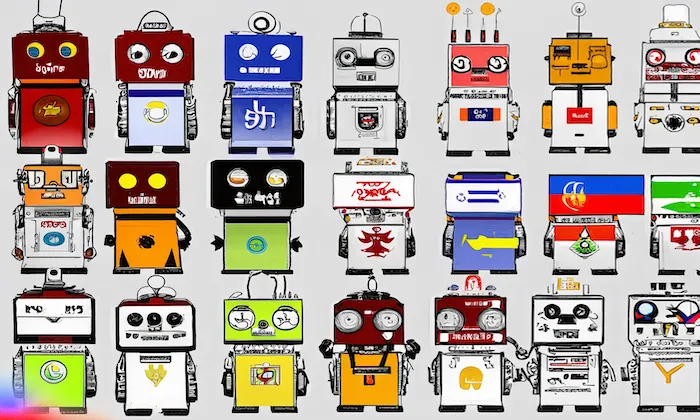What’s the role of dictation datasets in multimodal healthcare AI?
Dictation Data
Healthcare
Multimodal AI
Dictation datasets are pivotal in the evolution of multimodal healthcare AI, offering critical insights for applications like clinical documentation AI, medical transcription technology, and clinical decision support systems. These datasets consist of structured audio recordings where healthcare professionals verbally document patient interactions. By enabling AI systems to process and understand clinical language, these datasets are essential for improving healthcare delivery and operational efficiency.
What is Doctor Dictation Data?
Dictation datasets include collections of clinical voice recordings where a single clinician narrates patient information. Unlike patient-doctor dialogues, these recordings are monologues, rich in medical terminology, and focus on specific clinical sections such as History of Present Illness (HPI), physical exams, and treatment plans. Each session typically lasts from 30 seconds to several minutes, capturing the clinician’s thought process and speech patterns, including natural pauses and corrections.
Key Benefits of Dictation Datasets in Healthcare AI
Dictation datasets are essential for several healthcare AI applications, including:
- Speech Recognition in Healthcare: They train Automatic Speech Recognition (ASR) systems to accurately convert spoken language into text, specifically tailored for the medical domain, thus enhancing workflow efficiency.
- Data Annotation in Healthcare: By enabling Named Entity Recognition (NER), dictation datasets help machines identify key medical terms like diagnoses, medications, procedures, improving the accuracy of clinical documentation.
- Clinical Decision Support Systems: Analysis of dictation data aids in offering insights and recommendations based on a patient’s clinical history, supporting healthcare professionals in making informed decisions.
By integrating dictation datasets, AI systems can interpret diverse data forms like text, audio, and structured clinical data providing comprehensive patient care solutions.
Creating and Utilizing Dictation Datasets
Creating and utilizing dictation datasets involves several key steps:
- Data Collection: Clinicians record notes and collects data in controlled environments using various devices like smartphones and desktop microphones to ensure high-quality audio with minimal background noise.
- Medical Transcription Technology: Recorded audio files undergo transcription by trained medical linguists, converting speech into text and ensuring accuracy through a quality assurance (QA) phase.
- Annotation: Transcripts are enriched with annotations tagging relevant clinical entities such as symptoms and treatments, allowing AI models to learn effectively from structured data.
- Evaluation and Iteration: Continuous assessment of datasets through metrics like Word Error Rate (WER) and medical term recognition accuracy ensures they meet high standards, refining training processes for AI models.
Designing Dictation Datasets: Key Trade-offs
Designing dictation datasets involves careful trade-offs:
- Speaker Diversity: While diverse speakers enhance model robustness, they can introduce variability in speech patterns. Balancing diversity with consistency is vital for maintaining accuracy.
- Recording Conditions: Ensuring clarity while capturing natural speech, including hesitations and corrections, is crucial. Managing acceptable levels of background noise is part of this balance.
- Annotation Complexity: The depth of annotation impacts both dataset usability and AI model training. Comprehensive annotations improve performance but require more resources.
Challenges in Dictation Dataset Collection
Even experienced teams can face challenges:
- Overlooking Real-World Context: Not capturing the complexities of clinical speech, like corrections and hesitations, can lead to datasets that don't reflect real clinical practice, affecting AI performance.
- Inadequate QA Processes: Insufficient QA can result in poor data quality. Implementing thorough, multi-layered review processes is crucial for catching transcription and annotation errors.
- Neglecting Regulatory Compliance: Adhering to regulations like HIPAA is critical in healthcare. Teams must enforce stringent policies around patient confidentiality and data handling to avoid legal issues.
Conclusion
As healthcare AI evolves, dictation datasets will become even more integral. Future trends include integrating Large Language Models (LLMs) for advanced summarization and employing on-device dictation techniques for enhanced privacy. Continued refinement of these datasets will empower AI systems to deliver more accurate, context-aware insights, leading to improved patient outcomes.
For those involved in healthcare AI projects, especially those requiring domain-specific data, FutureBeeAI's expertise in collecting, transcribing, and annotating dictation datasets ensures high-quality, compliant, and scalable solutions tailored to your needs.
Smart FAQs
Q. How do dictation datasets differ from patient-doctor conversations?
A. Dictation datasets involve structured, single-speaker recordings focusing on clinical documentation, while patient-doctor conversations are interactive, featuring multiple speakers and more variability in language.
Q. What are the key components of a high-quality dictation dataset?
A. A robust dictation dataset includes high-quality audio recordings, accurate transcriptions, detailed medical annotations, and comprehensive metadata related to recording conditions and speaker characteristics.
What Else Do People Ask?
Related AI Articles
Browse Matching Datasets
Acquiring high-quality AI datasets has never been easier!!!
Get in touch with our AI data expert now!








